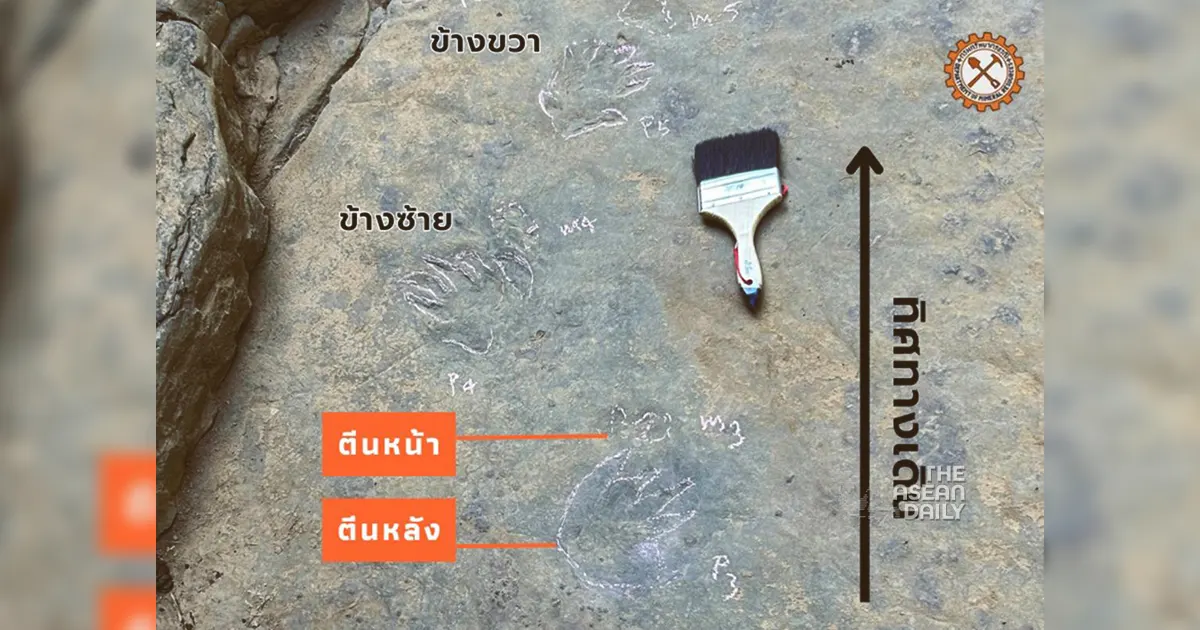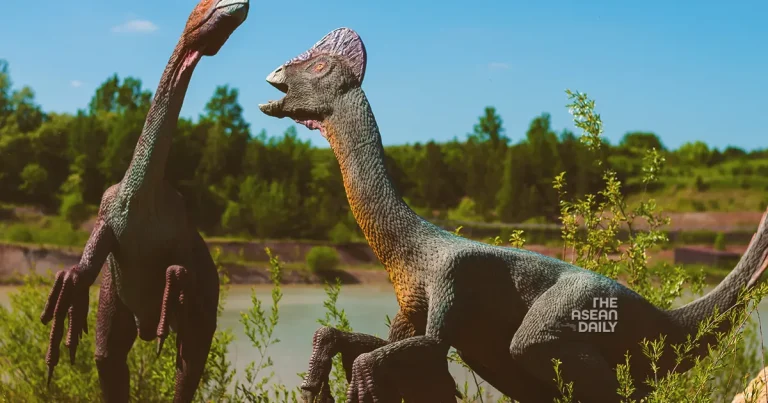15-1-2024 (BANGKOK) A remarkable discovery has been made at the Tat Yai waterfalls, situated on the border between Phetchabun’s Nam Nao district and Khon Kaen’s Phu Pha Man district. A set of prehistoric animal footprints, estimated to be 225 million years old, has been unearthed, providing a glimpse into the distant past.
The Department of Mineral Resources recently announced that a team from the Mineral Resources Office Region 2 (Khon Kaen), led by palaeontologist Tida Liard, conducted an initial survey of the site last Wednesday. The investigation was prompted by a report of animal footprints in Phu Pha Man National Park last year.
During the survey, the team made an exciting discovery. They came across five sets of footprints imprinted on mudstone, located on the lower part of the Huai Hin Lad rock formation. Ms. Tida described the findings, revealing that the first two sets of tracks belonged to sauropods. These long-necked, herbivorous dinosaurs date back to the late Triassic period, approximately 225 to 220 million years ago. Remarkably, these footprints are the oldest of their kind ever found in Thailand.

Among the footprints, two were believed to be from smaller creatures, while the final set was identified as belonging to an archosaur reptile. The most intriguing find, according to Ms. Tida, was the footprints of the archosaur. The stone preserved intricate details of the animal’s paws, including claws on both the front and back feet. These footprints exhibit distinct characteristics not observed in any other archosaur footprints previously discovered in Thailand. The team speculates that these footprints could belong to an ancient animal species that has yet to be documented in the country.
To ensure the preservation of these precious footprints, the team carefully collected the markings using a plastic sheet. Further studies will be conducted at the site before the arrival of the next rainy season, which poses a threat of flooding that could wash away valuable evidence. Ms. Tida emphasized the importance of thorough examination and documentation before the footprints are potentially lost to nature’s forces.




